“Holistic treatment” is one of those terms that often gets tossed about with little context for what it means. It can conjure a variety of reactions from people, not all of which are positive. Some people view holistic treatment as being at odds with traditional Western medicine. In reality, holistic treatment is just another possible approach to addressing substance use disorders (SUDs).
Holistic treatment may not be the right fit for everyone, but it is an excellent way to treat SUDs. Some people who have not experienced much progress from traditional interventions find holistic treatment to be what they need to jumpstart their recovery and achieve their life goals. Discover what holistic treatment means by reaching out to Gulf Breeze Recovery by calling 833.551.2304.
What Is Holistic Treatment?
Rather than being some new trend, holistic treatment relies upon medicinal practices dating back thousands of years and are common to Eastern medicine traditions. The term is commonly used among the rehab community as a catchall to describe an approach that targets the whole person.
What does a whole-person approach mean? A treatment using this approach focuses on mental, physical, and emotional well-being simultaneously rather than just targeting one of those elements. Implementing a holistic approach to rehab means dealing with the entirety of a person’s well-being without compartmentalizing aspects of treatment to just one issue or symptom.
Many people claim that holistic treatment is not evidence-based. Indeed, holistic treatment does not have the research behind it that methods like cognitive-behavioral therapy do. Many insurance companies refuse to cover holistic treatment options for this reason. However, the holistic approach can be very effective. Moreover, in no way does using holistic methodology preclude someone from receiving more traditional and evidence-based interventions simultaneously.
Examples of Holistic Treatment
Having answered what holistic treatment is, it’s time to dig into some examples of this approach. Many different techniques exist that fall under the holistic umbrella. These specific interventions can roughly be categorized into three buckets: therapies, physical activities, and mindfulness. Each category is explored below.
Therapies
A few therapies that are considered examples of holistic treatment are the following:
- Art and music therapy
- Equine therapy
- Experiential therapy
- Massage therapy
However, many other types of therapy fall under the guise of holistic treatment.
Physical Activities
Many holistic treatment options engage the physical body as part of the healing process. Yoga is perhaps the most common type of holistic treatment like this.
Yoga combines mindfulness, stretching, and physical activity. Whether or not they are recovering from a SUD, numerous people take advantage of yoga to improve their physical and emotional well-being.
Tai chi is another example of a physical activity linked to holistic treatment. It combines breathing and physical movement in ways that support physical and mental health.
Mindfulness
The last major category of holistic treatment examples is mindfulness. A few things that fall into this category are breathing exercises, meditation, and biofeedback.
What Is Holistic Treatment Best at Treating?
Holistic treatment can be used to treat any form of SUD. Addictive substance misuse is one of the most common things that holistic treatment is used to manage. It can also address other disorders related to dependencies or compulsions, such as cases involving food, gambling, and sex.
The best SUD treatment plans are generally customized to an individual’s needs. Sometimes that customization calls for the inclusion of holistic elements, and sometimes it does not.
Experience Holistic Treatment at Gulf Breeze Recovery
Gulf Breeze Recovery uses traditional evidence-based approaches alongside certain types of holistic treatment to produce the best possible outcomes for our clients. Learn more about our approach to SUD treatment by calling 833.551.2304.







